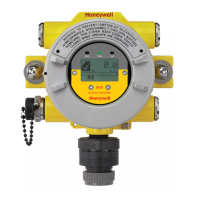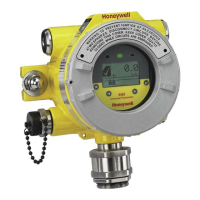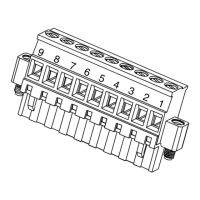XNX Universal Transmitter
Section 3 - Calibration
101
Gas Calibration Menu
Each of the sensor technologies supported by the transmitter uses
unique calibration procedures. The description provided illustrates the
transmitter interface with the sensor. The description does not replace
the procedures found in each sensor’s operating manual.
The Gas Calibration menu is used for Zero and Span calibration as
well as functional testing (bump testing). The Gas Calibration menu is
accessed from the Main Menu.
This table shows the Gas Calibration menu icons:
Symbol Description
Gas Calibration
Bump Test
Calibrate mA Output
Soft Reset
Align Excel
✓
Figure 191. Gas Calibration Menu
For calibrating sticky gases (Cl
2
, ClO
2
, HF, HCl, HCN, F
2
and O
3
), use
Tox Kit part number XNXTOXKIT2.
Default Calibration Values
Warning: Do not use the transmitter in oxygen-enriched atmospheres. Concentrations displayed will
be adversely affected by oxygen depletion.
Warning: Take appropriate precautions when using toxic, ammable, or pressurized cylinders.
Caution: The calibration procedure must be performed only by qualied personnel.
The default calibration values for the “Calibration Required” diagnostic
vary based on sensor type. This value can be reprogrammed in
accordance with site requirements to ensure the highest level of safety.
Before commissioning, verify the correct operation of each sensor
by calibration with a certied test gas of known concentration. See
Specications for calibration gas specications.
Caution: Recalibrate if the temperature of local environment has varied by more than ±15°C from the
temperature of calibration.
!
Warning: Honeywell recommends periodic bump tests (every 30 days or in accordance with
customer site procedures) to the sensor to insure proper operation and compliance with the functional
safety rating of the installation.

